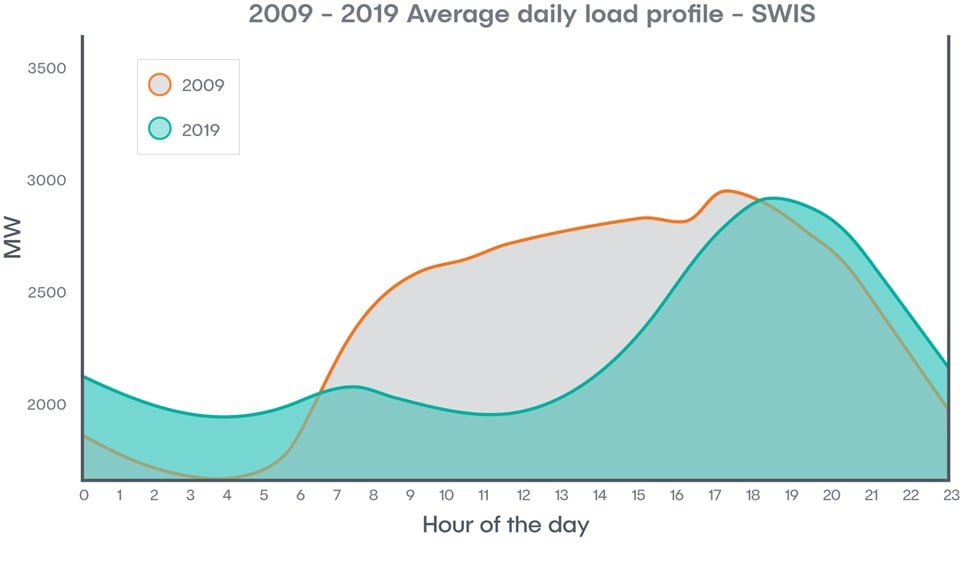How the partnership of solar and batteries can solve low-load
By Ben Bristow - Head of Grid Transformation
How many AAA batteries would it take to store the electricity from 275,000 solar panels?
About 5,675,052 to be precise.
That’s if you could buy that many.
A much easier way would be to install community-scale batteries where the benefits can be shared by all solar home owners, to help them get the most out of their renewable resource.
It’s something at Western Power that we’re actively pursuing (with the help of the State Government) as part of our response to both the challenges and opportunities of the solar revolution underway in WA.
With almost one in three homes in Perth and surrounds now having solar panels on their roofs (about 275,000), the combined output of these panels is by far the State’s biggest single source of electricity.
And we’re working out ways to use this amazing resource for the benefit of everyone. That will involve storage, when there’s more solar than we can instantly use.
This is nothing new.. For more than 70 years we have been managing the power needs of customers making sure that whatever time of the day it is, the energy load matches the high and low demand cycles of homes and business in turn providing customers with the reliability they have come to expect from Western Power
We have been working for several years now to make sure we can meet the changing energy patterns of customers smoothly without impact on your reliability.
Just like dealing with high peak loads in the past we have developed several strategies to meet the challenge of low load cycles on the network brought about by the popularity of rooftop solar.
What is low load? Low load (or system low) is the scenario where high volumes of solar are pushing more electricity into the grid at a time of low demand,. As more solar is connected to the grid, it applies additional pressure to the network’s capacity and can provide a challenge where electricity supply outweighs demand in certain areas. Western Power has a range of strategies that we apply in low load scenarios, ensuring power flow is managed. Low load scenarios generally occur when it’s a warm sunny day, but mild enough that people aren’t using air conditioners and pool pumps to soak up the extra power generated – usually during those shoulder seasons like autumn and spring.

The change in average load from 2009 - 2019 showing a significant change in load around midday.
Using existing infrastructure in substations, as well as the flexibility we have in the overhead and underground network, we can control power flow and direction from areas to maintain supply and service quality to customers.
We’re also rolling out grid-connected community batteries that can soak up excess solar on the grid and store it for later use by homes as an option for WA families interested in battery storage.
Why pay for an expensive battery, when you can lease a share of a “community battery” for around a dollar a day? We’ll take care of everything. No maintenance and no worry for you. You also avoid the upfront costs of purchasing the battery which is still out of reach for many Western Australians.
Community batteries also have the added benefit of smoothing out the load for the entire neighbourhood they are located in and therefore Western Power can contribute to the cost of the battery because we can avoid spending money on network upgrades.
We are continually working with industry and other partners in shaping standards to make sure the ongoing installation of solar panels is consistent and doesn’t disrupt customers use of electricity.
Given we want all of our customers to have the opportunity of benefiting from rooftop solar, we’re prepping for managing more solar in our future network.
There’s also smarter technology that will help.
New solar inverter standards allow solar rooftop systems to work in tandem with the grid on these sunny “low-load” days – they can adapt in real time to work with the grid’s temporary changes and to maximise output from solar panels. And new advanced meters we are rolling out will give us more sophisticated data to help manage the whole network for everyone.
All this is part of a broader package of reforms and measures that the State Government is undertaking to make sure the system is fit for the 21st century. One of the main elements of this is the “DER roadmap” to help plan better for the State’s distrusted energy future. Released in April it can be accessed form brighterenergyfuture.wa.gov.au
Read it and send us your comments.
Because we want your thoughts and ideas about how we can transform our energy system to be the cleanest and greenest on the planet.